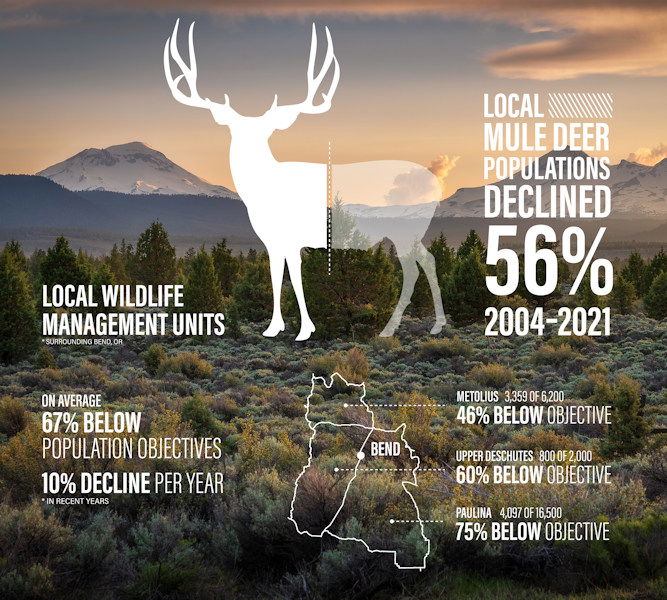Deschutes National Forest wildlife winter range closures set to begin amid deer population plunge

Central Oregon deer populations have dropped dramatically in recent years
BEND, Ore. (KTVZ) -- Starting this Wednesday, four winter range closures take effect across the Deschutes National Forest to provide critical habitat for deer and elk, officials said Monday.
Beginning Wednesday, Dec. 1, four wildlife winter range closure areas including Cabin/Silver Lake, Metolius Winter Range, Opine Travel Management Area and Tumalo Winter Range will begin. Motorized vehicles (including snowmobiles and electric bicycles) are prohibited in the closure areas, to protect deer and elk during the winter.
The winter wildlife closures will last through March 31, 2022.
The public can visit the following links to view maps of the closure areas:
- Cabin/Silver Lake Map (https://go.usa.gov/xeEzM)
- Metolius Winter Range Map (https://go.usa.gov/xeEzt)
- Opine Travel Management Area Map (https://go.usa.gov/xeEu3)
- Tumalo Winter Range Map (https://go.usa.gov/xeEua)
Winter range is habitat deer and elk migrate to to find more favorable living conditions during the winter, the Forest Service said in its announcement. Winter range is found predominantly in lower elevations of Central Oregon and is extremely important to elk and mule deer survival.
Winter ranges usually have minimal amounts of snow cover and provide vegetation for forage, hiding cover, and protection from the weather. In Oregon, elk and mule deer migrate, often long distances, to lower elevations to escape or minimize exposure to snow cover.
Local mule deer populations have declined 56% between 2004 and 2021, the agency said. Human disturbance of deer and elk during the winter can cause the animals to flee, which expends energy from the reserves they’re relying on to survive through winter.
By respecting winter range closures, the public can reduce impacts to deer and elk helping to sustain existing populations into the future.
The public can learn more about the importance of winter range here: https://go.usa.gov/xeEuZ